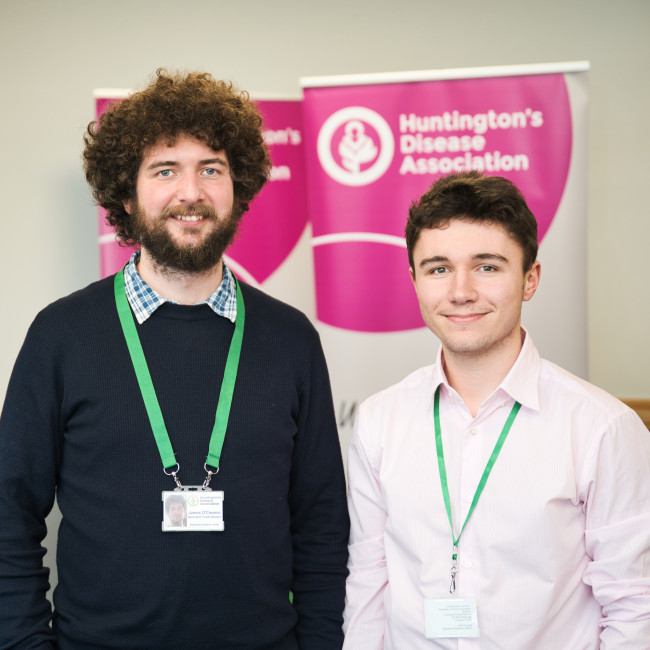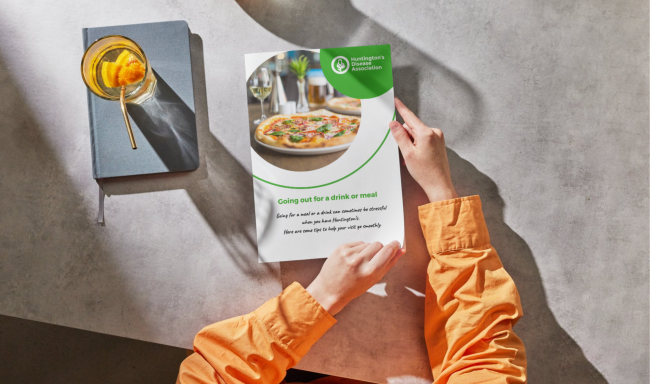We spoke to Dr Una Jones about the importance of keeping active and her work around physical activity in Huntingtons.
Physical activity is important for everyone in terms of being beneficial for physical and mental health. Specifically for people with Huntington’s disease, research has shown that exercise improves balance coordination, mobility, independence, posture and breathing.
Dr Una Jones was previously Chair of the European Huntington’s Disease Network physiotherapy working group and is an Honorary Senior Lecturer at Cardiff University where she carried out research on Huntington's disease. Una has worked closely with the Huntington’s Disease Association for many years on a wide range of projects aiming to help increase physical activity in people affected by Huntington’s disease.
From her observations, Una noticed that people struggled to keep active once research studies were completed. Because of this, she turned her focus to projects where people could use physiotherapy guidance in practice. After completing a project that was successful in the Netherlands and with the help of funding from the Huntington’s Disease Association, Una launched a project looking at how people living with Huntington’s disease could set their own physical activity goals.
We worked with people with Huntington’s disease, their families and healthcare professionals to develop the Physical Activity tool for Huntington’s disease – PAT-HD. One interesting point for this project was that the people using the tool in a Huntington’s disease clinic felt that it would be better placed to use the tool in the community – and that led to the next project which was the Keeping Active resource for carers of people with Huntington’s disease.
Keeping active project work
Una worked with the community on the Keeping Active project utilising the voices of carers, our HD Voice panel and Carers Trust Wales to ensure she got a variety of points of view.
The information in the Keeping Active resource is all research-based so carers and people with Huntington’s can use the information with confidence in its authority. As a resource that was co-produced between Una’s project team and the Huntington’s disease community including our HD Voice panel, it is specialised for people with Huntington’s disease. The tips and hints are specific to people who don’t just have movement problems but also thinking and behaviour issues.
I have had feedback from Huntington’s Disease Advisers and people with Huntington’s that they have found the Keeping Active resource very clear and helpful. One Adviser said that it had given the person with Huntington’s more confidence to go back swimming again. Carers have also said that they use the resource to discuss with the physiotherapists. I am hopeful that this will help bridge the gaps between what is physiotherapy, what is exercise and what is physical activity.
Physical activity project work
Another project that Una worked on was the physical activity stories. These show the positive impact on people with Huntington’s and also separate physical activity from exercise, which people often find daunting or unachievable. Una said:
Physical activity is any movement at all, so walking around the house, putting the shopping away, and gardening and are good things to do. Exercise is doing specific things such as step-ups or sitting to standing for a number of repetitions to improve things like strength or balance.
Lifestyle changes are difficult for most people, especially for those with Huntington’s disease. Una recommends choosing activities they are interested in and if possible getting involved in activities that include family, friends or a group.
If someone likes shopping, they could park a bit further away from the shops and walk the last bit of the journey. If someone likes having a coffee, they could find a café where they can walk all/part of the way.
Apathy also plays a part in the challenge of getting people active. It is important to remember that apathy is not a choice but a symptom of Huntington’s. Setting up a routine of activities in a planner can be useful. The planner in the Keeping Active resource can also be used to record activities so that the person can see what they have done and this may help encourage more activity.
Exercise and Huntington’s
For more exercise-based activities, Una advises that people ask for a physiotherapy referral and show the physiotherapists the Keeping Active Resource, so that they can work out what is best for the individual.
Thank you to Dr Una Jones for working with us on this piece about the importance of physical activity for people with Huntington's disease. All of the resources, information about Una's studies and personal physical activity stories can be found below.




